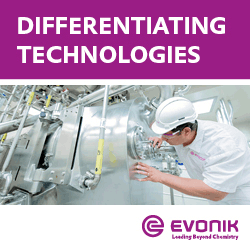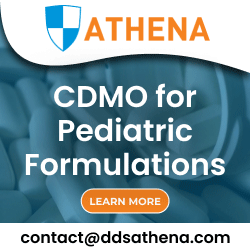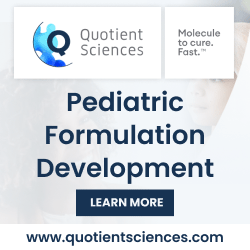Overview of pediatric drug development & more on leading CDMOs offering formulation development services for child-friendly pediatric products.
Q1. What are pediatric formulations and what are the different types?
In the pharmaceutical industry, pediatrics is defined as a branch of medicine dealing with the development, care, and diseases of infants, children, and adolescents. Thus, pediatric formulations are dosage forms that are specifically designed to be administered to the younger subset of the population.
However, pediatric patients may have trouble swallowing conventional solid dosage forms such as capsules and tablets. Moreover, bitter and unpleasant tasting medications can lower pediatric patient compliance.
Thus pediatric patients require different oral drug delivery systems and child-friendly formulations as compared to other subsets of the population due to their continuing pediatric medicine development, dosing and administration requirements.
Most conventional drug delivery formulations are not acceptable for pediatric patients as they differ in their developmental status and dosing requirements from other subdivisions of the population.
The oral route is the most preferred route of administration for pediatric patients. Other routes of delivery include transdermals, suppositories, parenterals, etc.
Specialized Solid Dosage Forms or Solid Forms:
Solid dosage forms are the most commonly used dosage forms because of their stability and ease of mass production. However, solid dosage forms are tough to swallow for children. Consequently, specialized solid forms such as fast dissolving tablets, chewable tablets, orally disintegrating tablets, powders, etc. have been formulated for administration to pediatric populations.
Some Types of Pediatric Solid Dosage Forms:
- Chewable Tablet
Chewable tablets are oral dosage forms intended to be chewed and then swallowed by the patient rather than swallowed whole. They are designed to be palatable and to be easily chewed and swallowed. The ease of administration and the minimized risk of choking make chewable tablets desirable for pediatric use.
- Orally Disintegrating Tablet (ODT)
An Orally Disintegrating Tablet (ODT) is a solid dosage form containing medicinal substances, which disintegrates rapidly, usually within a matter of seconds, when placed upon the tongue. Such child-friendly formulations dissolve or disintegrate in the mouth in the absence of additional water. They may have enhanced bioavailability and absorption is typically fast too.
- Orally Disintegrating Powder (ODP)
An Orally Disintegrating Powder (ODP) dissolves rapidly upon administration. They are highly portable dosage forms that offer an attractive alternative to tablet formulations, especially for those who have difficulty swallowing, such as geriatric and pediatric patients.
Pediatric Liquid Dosage Forms:
Liquid dosage forms are pharmaceutical preparations in the form of liquids which consist of active ingredients. Liquid dosage forms for administration to pediatric populations include solutions, suspensions, syrups, etc. Liquid dosage forms are useful because some people have problems swallowing solid dosage forms. Furthermore, the rate of absorption of a liquid dosage form is also faster.
Some Types of Pediatric Liquid Dosage Forms:
- Solution
An oral solution is an oral liquid that contains one or more active ingredients dissolved in a suitable base. The advantage of these formulations is their suitability for patients who have trouble swallowing. They also allow for flexible dosing by simply adding more or less liquid.
- Suspension
Oral suspensions are liquid preparations containing one or more active ingredients suspended in a sweetened, flavoured, sometimes coloured, and usually, viscous vehicle intended for oral administration. Dry powders for suspension are a common type of drug formulation used for children.
- Syrup
In medical terminology, syrups are nearly saturated solutions of sugar in water in which medicinal substances or drugs are dissolved. Syrups are extremely palatable dosage forms that increase pediatric patient compliance.
Q2. What are the general considerations for the development of pediatric formulations?
The development of pediatric formulations and presentations is necessary to ensure that children of all ages and their caregivers have access to safe and accurate medicinal dosage forms. However, pediatric formulation design and development is complex as there is a need to understand the physiological changes that occur during childhood and their impact on the absorption of drugs.
Some General Considerations for Pediatric Drug Development:
- When it comes to the design and development of pediatric formulations, the route of administration, dosage form, and dose of the active ingredient (API) are decided on the basis of the expected duration of the therapy, the disease affecting a patient and their age, size and stability during manufacture, storage, etc.
- Pediatric drug development or pediatric medicine development programs should include additional clinical studies to evaluate differences in pharmacokinetics and pharmacodynamics of drugs in adults and children because most pediatric patients are still physically developing.
- Pediatric drug development should consider ease of administration, palatability, stability and therapeutic equivalency of pediatric dosage forms.
- The selection of effective excipients for pediatric drug products is an important and often undervalued aspect of the pharmaceutical development process. Since pediatric patient safety is of paramount importance, toxicologically harmless excipients are required, especially in highly potent formulations.
- Age-appropriateness is an essential part of pediatric formulation and product development and adds additional biopharmaceutical considerations to an already complex problem. Biopharmaceutical considerations, which include physicochemical properties, can help one ultimately decide whether to start with a market image or an enabling formulation.
- Careful planning of biopharmaceutic considerations and data collection during the adult and pediatric development program can contribute significantly to the biopharmaceutic risk assessment and planning of appropriate clinical studies leading to the successful development of pediatric formulations.
- Additional considerations need to be applied for the development of pediatric drug products including those linked to cost, acceptability, usability, heat stability, healthcare provider training, health policy, and local regulatory requirements.
- Widely encompassing regulatory factors are to be considered when developing pediatric products following the correct good manufacturing practice approach to ensure high-quality pediatric formulations are produced that comply with standard customer specifications and pharmacopeial requirements.
Q3. What are the challenges involved in the formulation development of pediatric drug products?
The development of pediatric medicines or child-friendly formulations has greater challenges compared to the development of medicines intended for adult patients. Some of the challenges faced during the formulation development of pediatric drug products are noted in detail below.
Challenges Involved in the Formulation Development of Pediatric Drug Products:
- Patient non-compliance due to poor taste and swallowing problems is one of the main issues associated with pediatric drug product development or pediatric medicine development. The correct dosing for pediatric patients poses another major challenge to pharmaceutical manufacturers, prescribers, and often to a child’s caregivers.
- Other challenges such as insufficient background information on drug molecules, excipient safety, taste masking issues, drug delivery technology requirements, low profitability, limitations in conduct of clinical studies, and lack of regulatory clarity are also factors adversely affecting pediatric dosage form development.
- Additional challenges of pediatric formulation and product development include the ethics and logistics of conducting trials in children. Pediatric drug products challenges have been reported to arise from fears of harming children, political and economic influences, lack of resources, and a bureaucratic regulatory framework.
- Many drugs currently used in children have never been adequately studied in rigorous scientific trials. The lack of child-friendly formulations leaves 40% of the world's population at increased risk for avoidable adverse events, suboptimal dosing, noncompliance, and lack of access to new medicines.
- Liquid dosage forms for pediatric patients have their own set of challenges. Physical, chemical and microbiological stability must be assured with buffering agents, antioxidants and preservatives. Alternatively, solid forms include potential for technical challenges such as powder processing, packaging, stability and dose extraction. Furthermore, taste making must be achieved for both dosage forms.
- Non-oral routes of drug administration are limited by the difficulty in application or administration and the potential for local site irritation. Parenteral and topical administration also face challenges in measuring and administering small dose volumes that have the potential to cause dose variation and errors during pediatric formulation and product development.
Q4. Which are the leading CDMOs offering the development of pediatric formulations?
Various pharmaceutical organizations including Contract Development and Manufacturing Organizations (CDMOs) equipped with pediatric drug formulations and administration technologies offer pediatric formulation development services. Some of them and the formulation and development services they offer are noted below.
Adare Pharma Solutions - Pediatric Formulation Development
Adare is a global technology-driven CDMO which offers industrially feasible physical barrier technologies, such as Microcaps® and Optimum®, for taste masking dosage forms for pediatric populations. Its proprietary taste masking platforms can improve product acceptability and patient adherence. Adare therefore offers contract services for the development of pediatric medicines and drug delivery technologies.
Quotient Sciences - Palatable Pediatric Formulation and Development
The development of acceptable, palatable pediatric formulations is a key feature within the industry, driven by patient needs and regulatory requirements. Quotient Sciences has the capability to provide a unique integrated development solution.
It has an extensive track record for developing age-appropriate dosage forms of aversive, bitter drug substances using a range of taste-modifying and taste-masking techniques without compromising on product stability and PK performance. It thus provides pediatric formulation and product development services.
Athena Pharmaceutiques - Pediatric Formulation Development
Athena offers the development of pediatric medicines. It is a leader in developing oral dispersible products based upon its ODT drug delivery technology. Using its Fastmelt® platform, Athena develops orally disintegrating tablets (ODT) for pediatric and geriatric populations.
Mikart - Pediatric Formulation Development
Mikart understands that there are several key components when it comes to successfully developing products for pediatric populations. Mikart has the technology and expertise to develop and manufacture palatable pediatric products from pre-clinical studies to commercial launch.
Mikart offers pediatric formulation development using pediatric drug formulations and administration technologies. They develop and customize pharmaceutical development plans depending on taste masking strategies, taste and palatability, excipient selection, route of administration and PK profiles.
Senopsys LLC - Palatable Pediatric Formulations
Senopsys has been at the forefront of developing palatable, taste-masked pediatric products since the enactment of the Best Pharmaceuticals for Children Act (BPCA) in 2002. They offer contract services for taste assessment, drug product design, pediatric formulation development and taste masking via pediatric drug formulations and administration technologies.
All Suppliers












 Athena Pharmaceutiques is a Partner of Choice for Drug Delivery & Life Cycle Management.
Athena Pharmaceutiques is a Partner of Choice for Drug Delivery & Life Cycle Management.











